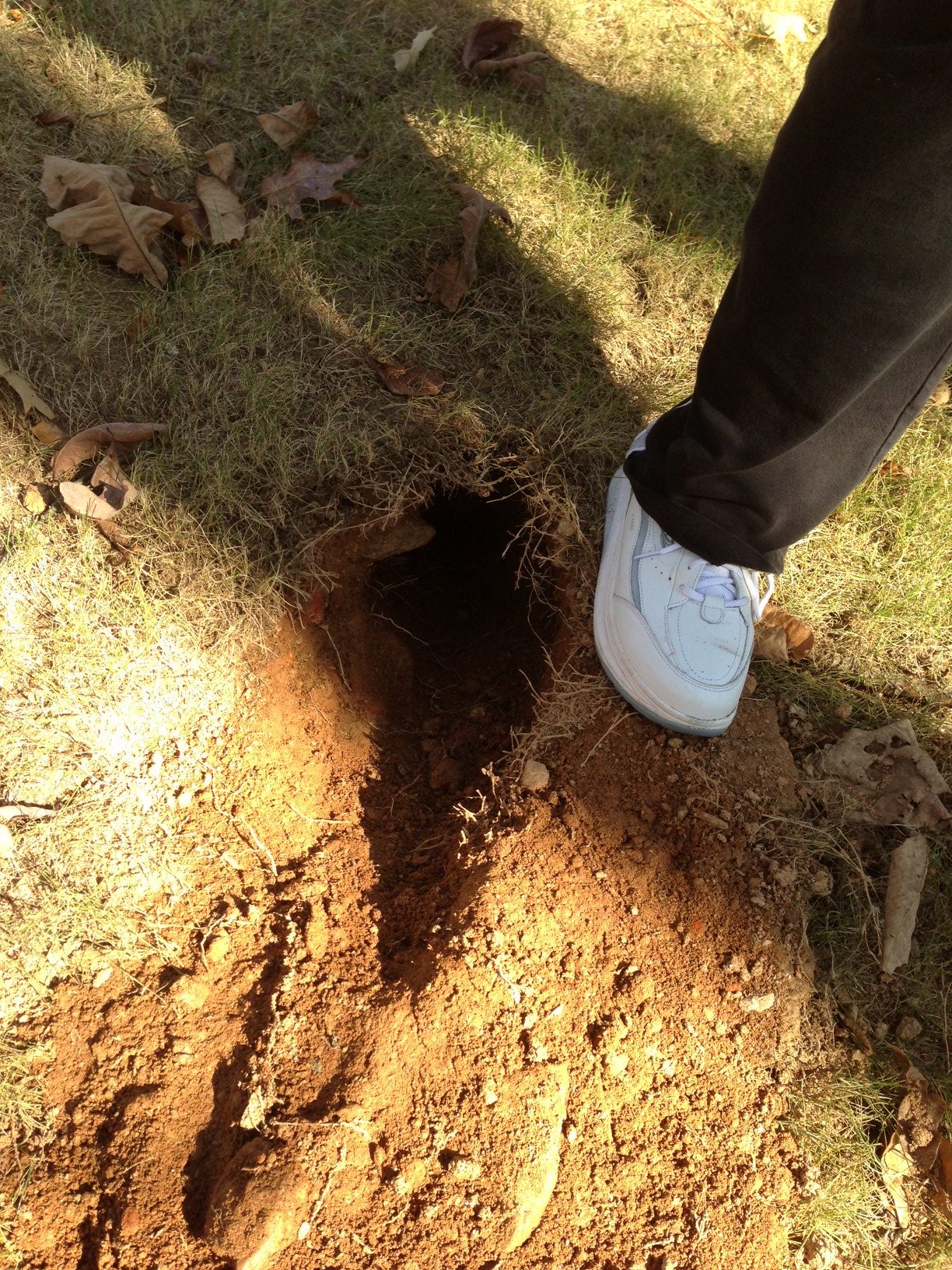Name that plant
Details:
-
Date Photo Taken
12 / 01 / 2012
-
Season Photo Was Taken
Winter
-
Region Photo Was Taken
Southeast
-
City
Douglasville
-
State
Georgia
-
Posted by
joelampl
Notes:
This hole was discovered after recently laid sod had been displaced. It appears to be about as wide as a salad plate at the opening. The hole is in an area where sod was recently placed and there are woods surrounding this property located just west of Douglasville, GA.



Comments
sunnysue2009 Master Identifier says:
Yikes! In science Armadillos are often used in the study of leprosy, since they, along with mangabey monkeys, rabbits and mice (on their footpads), are among the few known species that can contract the disease systemically. They are particularly susceptible due to their unusually low body temperature, which is hospitable to the leprosy bacterium, Mycobacterium leprae. (The leprosy bacterium is difficult to culture and armadillos have a body temperature of 34¡C (93F), similar to human skin.) Humans can acquire a leprosy infection from armadillos by handling them or consuming armadillo meat. http://en.wikipedia.org/wiki/Armadillo
January 9th, 2013 at 4:35pm
Walter Reeves The Georgia Gardener says:
Did you mean “armadilli have made their way to Atlanta”?
January 3rd, 2013 at 5:33pm
Joe Lamp'l Registered says:
Thanks Guys. The extra links are a nice bonus. I’ve been away for so long, I forgot armadillo have made their way to Atlanta.
January 3rd, 2013 at 2:07pm
Walter Reeves The Georgia Gardener says:
I agree with Bobby: armadillo. I can’t think of another animal that could make such a hole. See my notes here http://www.walterreeves.com/gardening-q-and-a/armadillo-control/
January 1st, 2013 at 9:58am
Bobby Master Identifier says:
I would guess an armadillo burrow. Armadillos are becoming a greater problem every year in the West Georgia area. Evidence of active feeding are much smaller digs throughout the lawn and landscape. “Burrow entrances will be 8 to 10 inches across and range from 2 to 24 feet long averaging 3 to 4 feet” (http://apps.caes.uga.edu/urbanag/index.cfm?storyid=2685 ) The second picture on the following link shows one of the critters working: http://www.orlandorats.com/armadillo-burrows.htm They may occupy a home sweet home for up to 15 years. Not in your new sod I hope! I’ve met people who’ve dropped their opposition to firearms over these critters.
December 31st, 2012 at 3:42pm